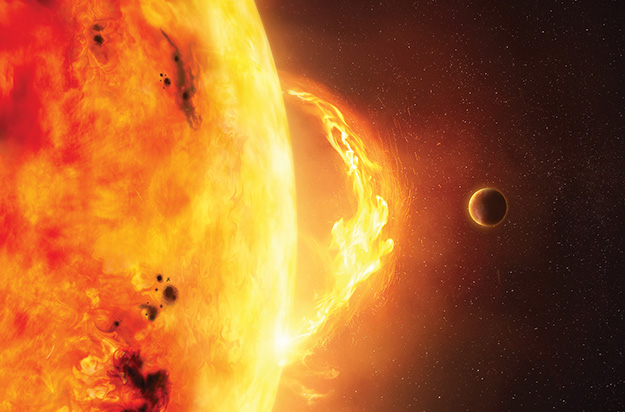Heat Wave
Forecast: Solar Flare
UTA receives $4.5 million grant to develop a simulator that can predict space weather with unprecedented accuracy

Space weather like solar flares can disrupt the communication systems we use on Earth
Whether we're monitoring the weather, tracking satellites, or relaying military messages via high-frequency radio waves, we rely on models that estimate the energy entering Earth's atmosphere every day. But when space weather events like solar flares occur, they can throw those estimates off by as much as 100 percent and cause the models to yield errors of up to 30 percent—greatly affecting GPS and communication systems.
Physicists at UTA are leading a $4.5 million, national project to develop a space weather simulator capable of predicting solar flares and other energy distributions to an accuracy of one degree longitude and one degree latitude—roughly 100 kilometers in each direction. Joining the project are UCLA, Johns Hopkins University, MIT, the University of Colorado at Boulder, the University of New Mexico, and UT Dallas.
"This is a golden opportunity to help improve our ability to predict space weather effects with much higher accuracy and detail," says Yue Deng, an associate professor of physics and the project's leader. "We are bringing together physicists from seven leading research universities to create a global simulation model that combines our joint knowledge and experience to solve this important problem."
The five-year initiative comprises multiple phases of data analysis and assimilation as well as development and validation of the model itself. In the first phase, researchers will gather measurements of electric and magnetic fields taken from low-flying spacecraft and ground-based remote sensing tools. This info will be processed from both quiet and storm periods to define the intensity and distribution of energy in the upper atmosphere.
Next, the researchers will compare the data with readings from Dr. Deng's Global Ionosphere-Thermosphere Model (GITM), which simulates energy redistributions in the upper atmosphere through advanced computing. The team hopes to create a more accurate simulator by combining Deng's GITM with UCLA's Rice Convection Model, as well as by applying numerical modeling and data-processing techniques from UTA professors in mathematics and physics.
"To boost space weather modeling we have to go to a smaller scale, spatially and temporally, which will require new physics as well as combining our current knowledge and models," says Deng. "We will also have to take into account many new phenomena and processes to make this new global simulator effective."

















